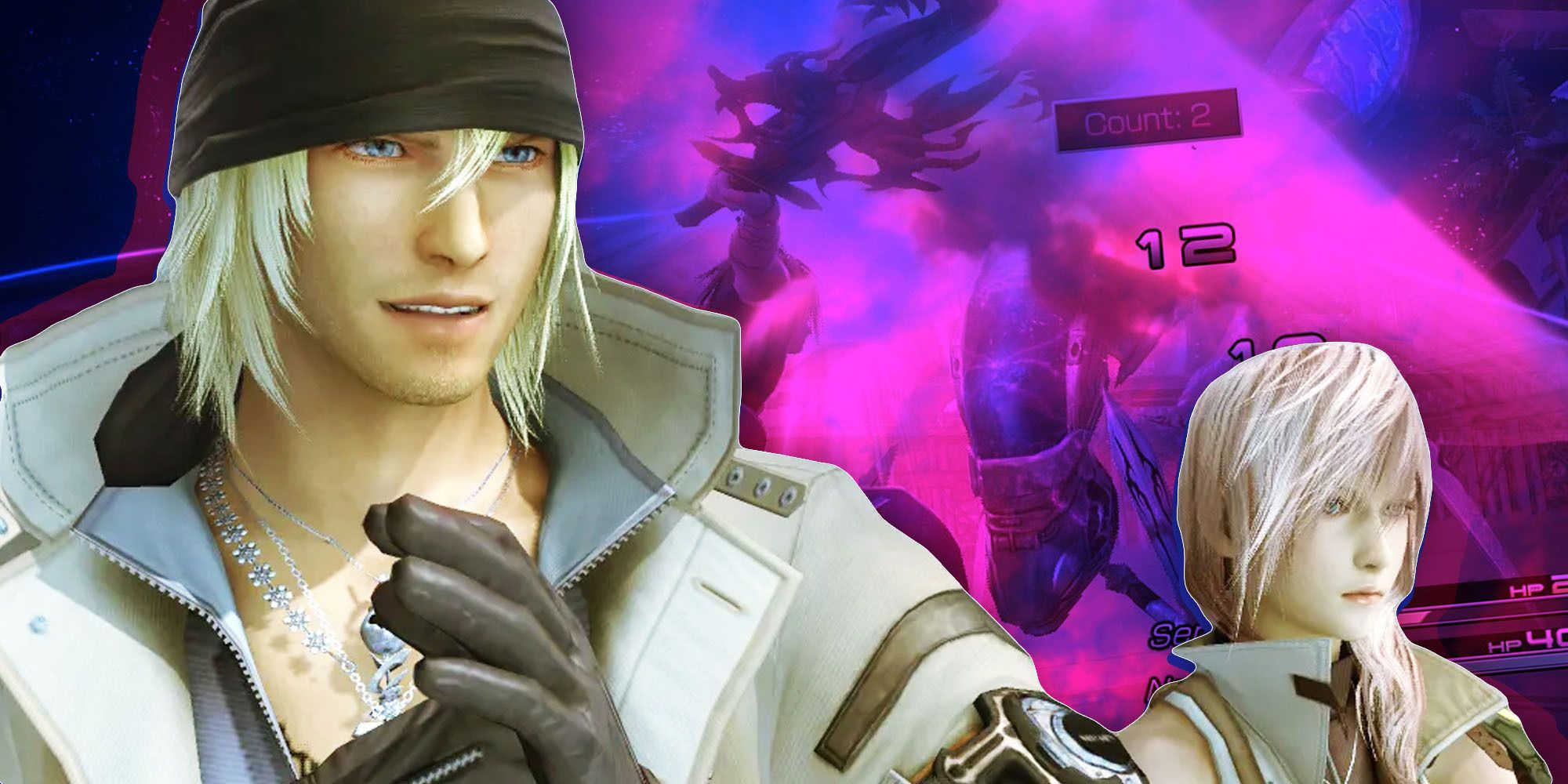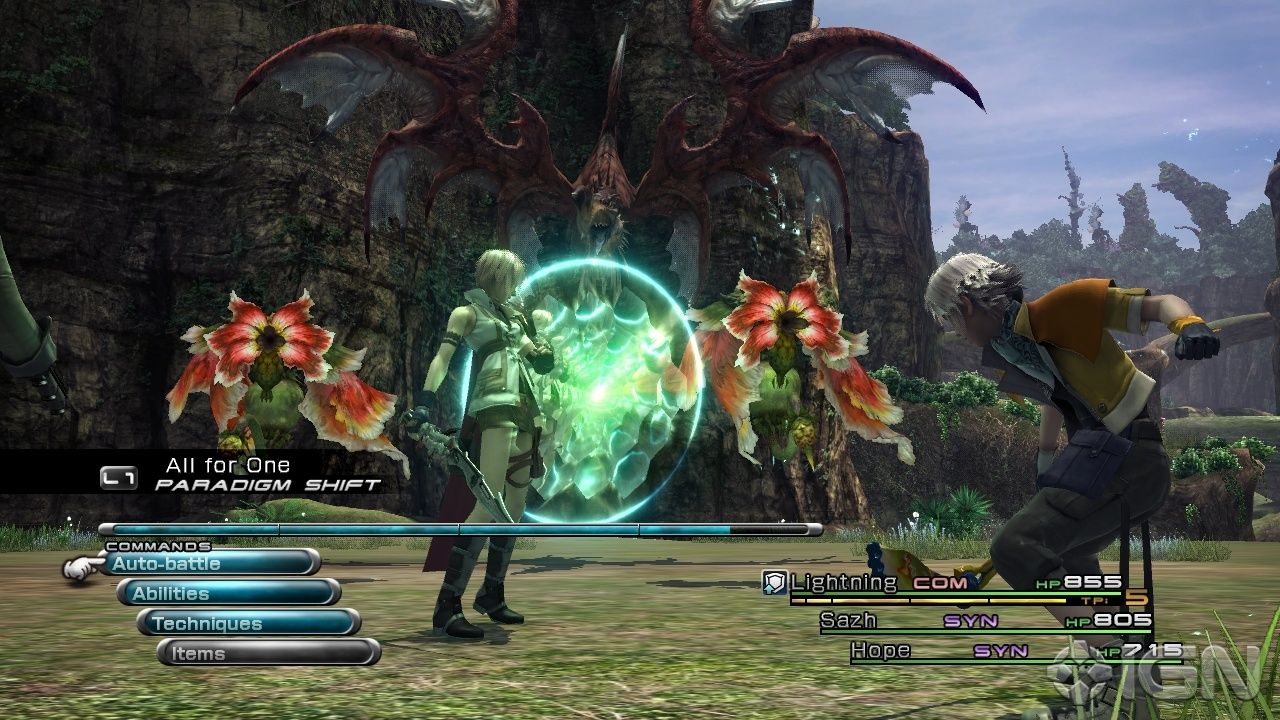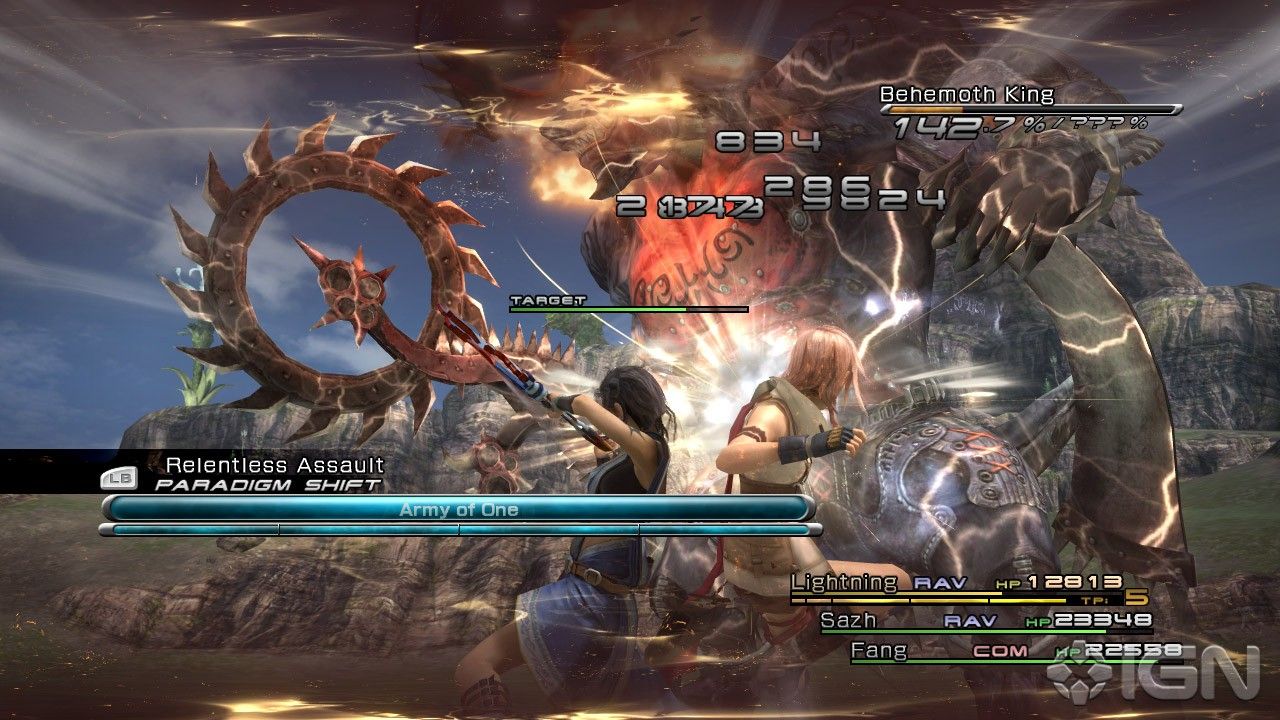Ever since it first released in 2010, one of the common criticisms thrown at Final Fantasy 13 is that the RPG plays itself. The majority of its environments are little more than gorgeously rendered corridors with the occasional diversion for treasures and encounters, and you’re incentivised to use an auto-battle option to steam through combat without any distractions.
Having a command which fills your ATB gauge with appropriate actions for any situation you might find yourself in takes away a once valuable asset of Final Fantasy’s turn-based battle systems, so of course this change was met with derision from fans. Looking back however, and as I find myself in the midst of a new playthrough, I think its deserving of some praise.
In the early hours, I’ll admit the combat system doesn’t do itself many favours. It takes a few chapters for the Paradigm Shift System to become unlocked, let alone flexible enough where we’re able to incorporate our own unique combos and strategies. Once it does though, you’ll take only seconds to realise why auto-battle needs to exist. It isn’t a tool that steams through the game for you with little to no challenge, and if you ever
dared to consider it as such you’ll become very good friends with the game over screen. Instead of mere automation, it offers a tool that best takes advantage of Final Fantasy 13’s multiple character classes and roles.
For those who understandably aren’t caught up with a game that came out thirteen years ago, paradigms are essential to how Final Fantasy makes use of its class system. You have the likes of Commando (Warrior), Ravager (Black Mage), Medic (White Mage) and many others which can be switched between at the press of a button. Outside of battle, you’re encouraged to piece together distinct combos that compliment one another, switching between them in the midst of battle when you need to buff, heal, or deal loads of damage.
Specific enemies are armed with their own strategies, meaning you’ll soon grow familiar with the best approaches to certain encounters, or fumble through a fun process of trial and error with the majority of boss battles. You’re expected to fail, or at least embrace paradigm shifts and the experimentation at the centre of their design. Fail to play by the game’s strict rules or you’re going to have a bad time, but now that I’m a dozen hours into my new playthrough, I hardly see this demand as a bad thing. It means hard fought battles come with an unrivalled sense of satisfaction, and it’s easy to understand why characters are outfitted with select roles that perfectly complement one another. Much of the first act has the party split into duos, which is a clear means to make it easier for us to learn how paradigm combos work before the ante is upped. Which it is, and Final Fantasy 13 will kick your ass in some of its later boss battles.
Even standard encounters can wipe the floor with you if you fail to pay attention, especially when using auto-battle the majority of the time instead of selecting commands on your own. It’s both more convenient and removes much of the frustrating busywork that wouldn’t match the pace of this game’s otherwise frenetic battle system. The Crystarium - a menu option in which you upgrade skills and learn new abilities - should have ditched the linear nature of almost everything else in the game to make Paradigms feel more freeform, but it’s a small complaint for a battle system that in many ways is the apex of Final Fantasy’s turn-based ambitions.
It far from plays itself, and to imply that it does fundamentally misunderstands a game which is far better than I remember it being. Try beating Barthandelus without switching paradigms.



